World War 2.5 – Gaming An Alternate History [Finale!]
March 9, 2015 by crew
At last we end our article series on “World War 2.5” where the fate of Europe is yet again decided on the battlefield. A year after the fall of the Third Reich, the armies of the former “Allies” find themselves once more in combat, this time against each other. Two weeks ago, the Soviet Union (perhaps provoked past endurance by the paranoid and nuclear-armed west) has launched a full-scale invasion of West Germany.
If you’re new to our series, see Parts One, Two and Three here to see how this campaign has gone so far. Don't forget that right now we also have the download for the Rules Pack that goes along with this campaign so once you're done reading give that a look! For now, it’s June 15, 1946 and the crisis has reached a boiling point in central Germany.
Backstage Rules Pack Download
CAUGHT IN A PINCER - June 15, 1946
Major John Wyte wonders if he should tell his men that their mission has already failed.
Commanding a mixed battlegroup of the 11th Armoured Division, Major Wyte leads the vanguard of a British counterattack driving on Wolfsburg. Their mission was to relieve the brave chaps of the 3rd Canadian Infantry, fighting off three times their number in the streets of the crumbling German town. Radio communication with the Canadians has ceased. Regiment HQ confirms Major Wyte’s fears, no one has heard from 3rd Canadian since 06:00 this morning. The rescue force has come too late.
All too soon, Wyte’s battlegroup has troubles of its own. Regiment has just passed word that Typhoon patrols have spotted two Soviet columns converging on his position. Intelligence has identified these as the 8th Guard's Mechanized Brigade coming down from the north with heavy tank regiments approaching from the east. Wyte’s new orders are to fall back to a vital crossroads and hold as long as he can denying the Soviets access until the rest of the division can mobilize against the threat.
With a combat record running back to the campaigns against Rommel in North Africa, Major Wyte is no stranger to being hit from more than one direction. Taking personal command of the Challenger tank, he quickly deploys as the Soviets make their two-pronged advance. At first, this defence holds firm, especially in the east. Here, his Churchills and infantry (firing PIAT antitank launchers) hammer approaching SU-100s and infantry. Things don’t go so well to the north, where hulking ISU-152 assault guns wipe out an infantry squad and immediately threaten Wyte’s left wing. To redress the situation, Wyte commits the ace up his sleeve, one of the brand-new “Centurion” main battle tanks.
An ear-splitting shriek crushes all other noise off the battlefield, the unmistakable howl of massed Soviet “Katyusha” (Little Kate) rockets. Instantly Wyte loses contact with his mortars, and judging by that wall of fire billowing a hundred feet into the air, Wyte knows those mortars are gone. One Churchill blows up, the other is killed as it tries to withdraw. The Fireflies and Comets respond, killing one of the dreaded IS-3 heavy tanks. The battle is an uneven one, even as a Typhoon finally appears overhead to maul more Soviet armour. Soviet mortars take out the rest of the British infantry, and even the Centurion eventually goes down to a lucky hit.
Despite these losses, Major Wyte knows he has gutted the Soviets just as badly. He orders his Challenger back to a churchyard in the northwest corner of the battlefield. His only other tank, the valiant Black Prince, has thrown a track in the thick hedges. Refusing to abandon his comrade, Wyte stations his Challenger in an overwatch position and prepares to make his stand. Again comes the demonic scream of the Katyushas, the blast kicking the earth from under his Challenger. Yet Wyte’s tank has survived. The Black Prince, however, is not so lucky, only two of its crewmen surviving to bail out and sprint back toward him.
Wyte’s gunner yells out a sighting report. Soviet assault guns and tank destroyers close from two directions. Wyte bellows to engage the tank killers, sighting in on the first SU-100 and giving the order to fire. The 17-pounder kicks in its braces, and a sickening tongue of flame jets out of the Soviet wreck. Already the loader is swinging another shell into the breach, but the Soviets have already fired. The Challenger is hit with a deafening clang and already Wyte knows the hit is fatal. The Challenger is on fire and he screams the order to bail out.
At last, the battle is over. Even as Major Wyte, burned and bleeding, limps out of his tank and hands his pistol to a young Soviet Guards lieutenant, the rest of the 11th Armoured Division is consolidating positions on the roads to Hannover. Major Wyte and his men cannot know, marching off to an internment camp in Poland, how much this “defeat” has won for his comrades. Hannover will never fall, and the line of British Army of the Rhine, however battered and bent, will hold. He won’t know until he and his men are released after the war where he returns home to receive his Distinguished Service Order (DSO) for his heroic but doomed stand outside Wolfsburg.
COUNTERATTACK AT KASSEL - June 18, 1946
By 04:00 on June 16th both Soviet and Allied commanders realize that the campaign in Germany is coming to a head. British forces have taken hard defeats but broken Soviet attempts to encircle Hannover for a second time. American and German forces have lost Hof and Nuremberg, but hard-hitting French and German counterattacks have ensured that Frankfurt and Mannheim are no longer under immediate threat. With the north and south in bloody stalemate, the Allies resolve to make their last big counterattack right in the centre, where half-hearted Soviet attacks on Kassel have recently come to grief.
Captain Harold Peters can’t say he’s happy to be back in Germany. He’d first come here as a platoon leader with the 3rd Armoured Division in ’45, then as a company commander in the “Fulda Gap” battles two weeks ago. The whole division was badly torn up, but no sooner had they been patched together in Belgium than they were being moved back into Germany. Something big was up, but no one at Battalion S-2 (Intelligence) or S-3 (Operations) was talking. The rumour mill, however, speculated that a big offensive was in the making, the objective no less than an invasion of East Germany.
Captain Peters commands Able Company, 1st Battalion / 33rd Armoured Regiment, 3rd Armoured Division. It’s a hodgepodge of M26 Pershing heavy tanks, M4A1(76)W Shermans, and M4A3E8 “Easy Eights,” whatever was available when Division was throwing itself back together. Peters forms the centre of gravity for 1st Battalion, with the 75mm-armed Shermans of Baker Company coming across the Kassel bridge to his left and the lighter M24 Chaffees of Charlie Company at the churchyard to his right. Dog Company is in reserve, together with the infantry attached from 36th Armoured Infantry.
The American mission is simple, if terrifying. They are to drive northward and breach Soviet defences along the Halle-Kassel autobahn, opening the road into East Germany. Too mad no one mentioned the entire Soviet BATTALION coming down that highway the other way. Battalion acknowledges Peters’ report and orders Peters to halt his advance and grab cover. The reason becomes horrifically apparent as the skies thicken with the drone of hundreds of aircraft engines. A whole fleet of B-17s, the kind of armada they used to send at German cities, is carpet-bombing a grid five klicks wide and ten deep starting just a few hundred meters in front of Peters’ line.
Five minutes later, it is over. Through a horizon of smoke and dust, Peters can make out tongues of flame. Clearly Soviet armour has been hit. But there’s plenty left, as Peters’ gunner confirms with a half-panicked contact report. Peter snatches up his radio, ordering Able Company to open fire. To his left, Baker Company is already engaged, some of them shooting straight off the bridge. Charlie Company is also in trouble, engaged in a fight for their lives in that churchyard.
For Captain Peters, the next ten minutes are a blur. His gunner kills the lead T-34/85. An ISU-122 takes a shot at him, Peters swears he can hear the shell hiss by his turret. The turret of that ’85 is just landing in a roll of oily flame. A Sturmovik screams down and takes out the Pershing right next to his. Second Platoon’s “Easy Eights” face off against the Stalin-3s, but they can’t get through the frontal armour. Yelling to his driver, Peters orders his Pershing forward before pivoting right to hit the command Stalin in the flank (those extra antenna are a dead giveaway).
Now he’s awash in Soviet armour coming straight down the autobahn. If he lives to be a thousand, he’ll never know how he survives the next sixty seconds. But before it’s over his crew has killed an SU-100, a T-34/76, and (with two shots) that ISU-122 that almost took his head off. But now Peters has other troubles – his tank is almost out of ammunition.
P-51 Mustangs come in, their rockets taking out a second Stalin while Third Platoon finally gets a flank shot on the third. Battalion artillery drops a smoke screen on the highway, blinding at least some of the Soviet counterfire coming back at them. Baker Company is taking losses, one Sherman’s turret blown clean off the bridge to land in the river. Charlie Company is screaming for help by that churchyard. Peters engages an ISU-152, killing it with his last rounds and bringing his crew’s tally to six. Halftracks loaded with infantry pour up, almost immediately engaged with what sounds like a Soviet guards rifle company. Still Peters is determined to help. His 90mm may be dry, but he still has machine guns.
By the time the day is won, 1st Battalion has only a handful of tanks left, many of these out of ammunition or broken down. As his Pershing rumbles down the autobahn, the rest of 33rd Armoured Regiment falling in behind, Peters passes a sign in German, Russian, and English: “NOW ENTERING THE GERMAN DEMOCRATIC REPUBLIC.” East Germany. With an exhausted sigh, Peters shakes his head. He really is getting tired of this country.
So how does “World War 2.5” end? Well, that’s outside the scope of an operational-level game. We’re only trying to see how a certain campaign ends, and suffice it to say the Soviets have lost this one. Fighting will probably rage for quite some time, but this is the juncture future historians will mark as the turning point. In game terms, the Soviets hold seven West German city hexes, giving them a score of 21, compared to the Allied 28 (still holding 25 West German city hexes, plus one East German hex for 3 additional points).
Want details? Download the “World War 2.5” game, available for Backstagers on Beasts of War. If you have any questions, we can start an “FAQ” thread in the History Forum. In the meantime, I’d like to thank BoW community member @gladesrunner for all her playtesting help (and patience), as well as my friend Russell at GXE Games in Pompano Beach, Florida. I’d also like to thank @amphibiousmonster and @jamesevans140 for “convincing” me to undertake this project, and of course our kick-ass BoW editor @brennon for putting up with my over-lengthy drafts and making these articles look so great on the site.
Backstage Rules Pack Download
The Series:-
- Part One: The Floodgates Open
- Part Two: The Big Push
- Part Three: Valiant Heroics
- Part Four [Finale]: The End?
If you would like to write an article for Beasts of War then please contact me at [email protected] for more information!
"Their mission was to relieve the brave chaps of the 3rd Canadian Infantry, fighting off three times their number in the streets of the crumbling German town..."
Supported by (Turn Off)
Supported by (Turn Off)
"...Peters is determined to help. His 90mm may be dry, but he still has machine guns."
Supported by (Turn Off)


































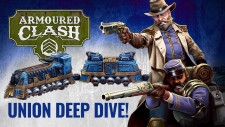






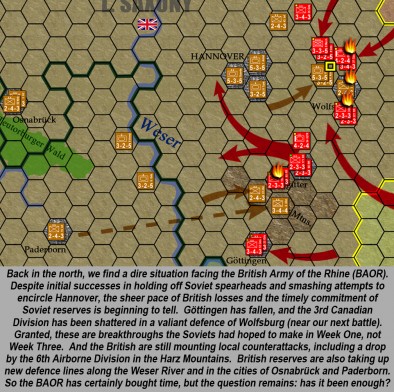

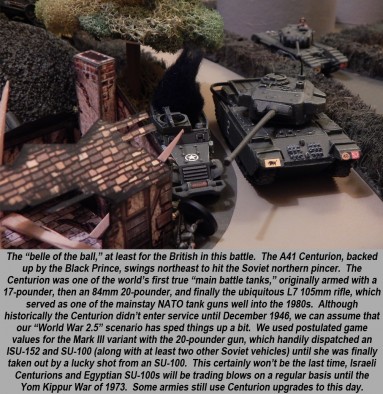
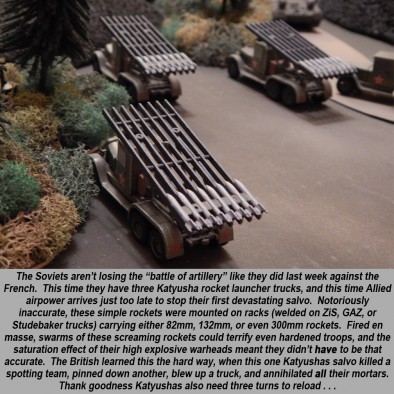
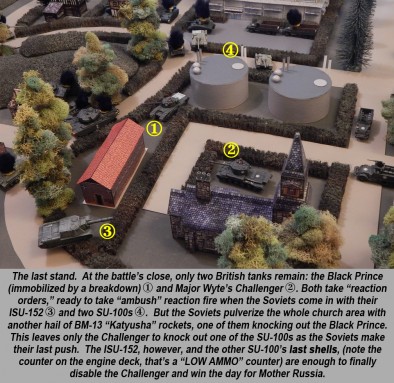
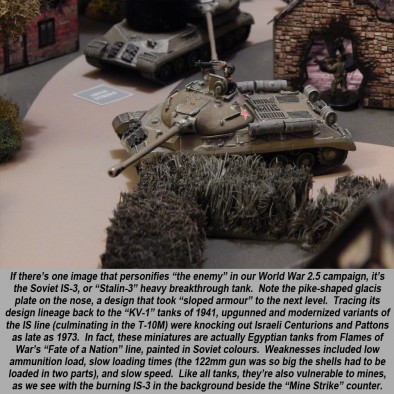
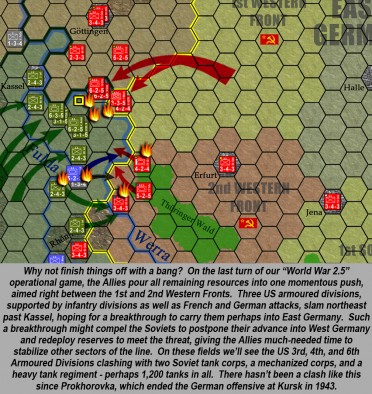
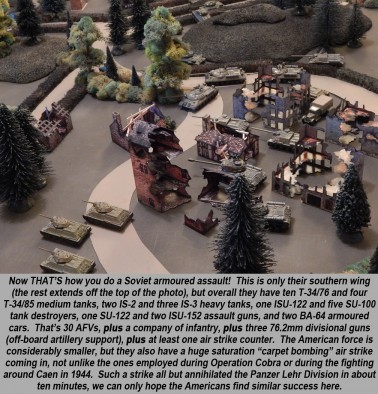
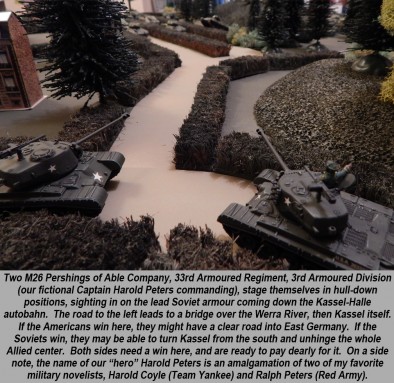
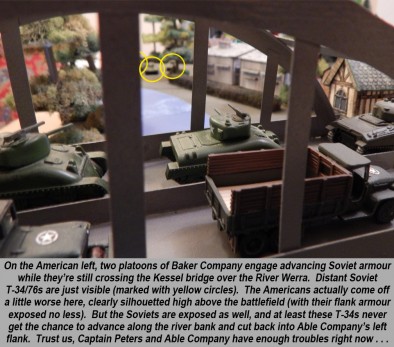
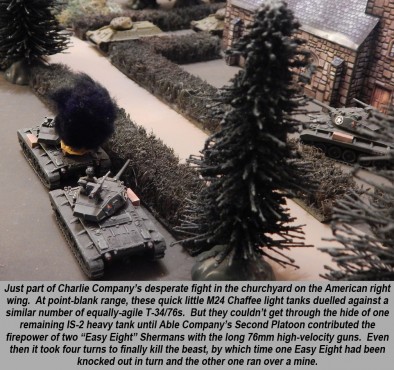

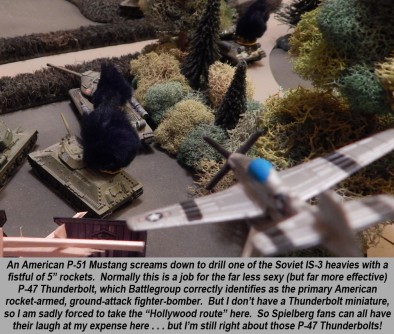



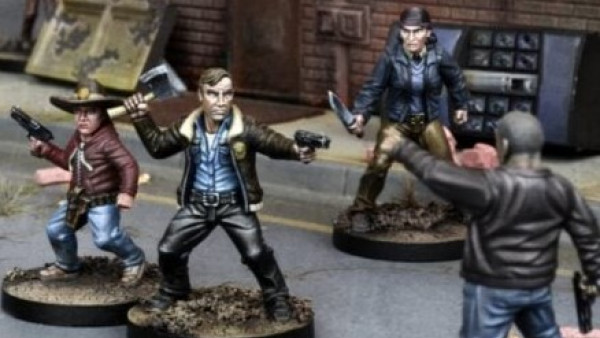


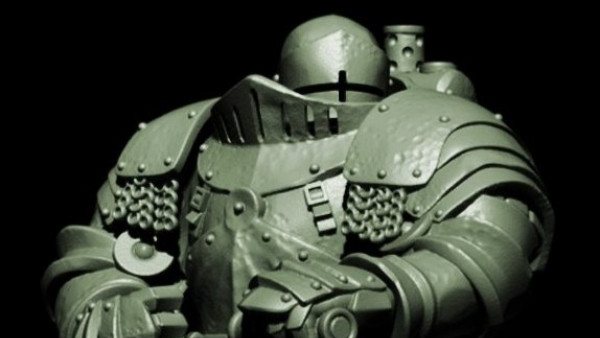
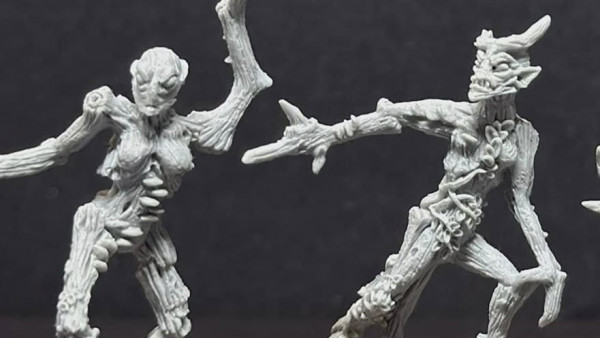
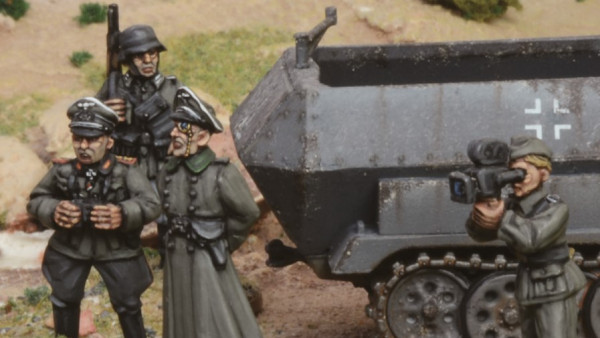


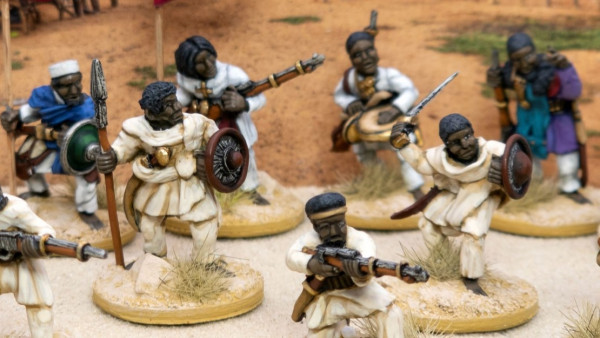
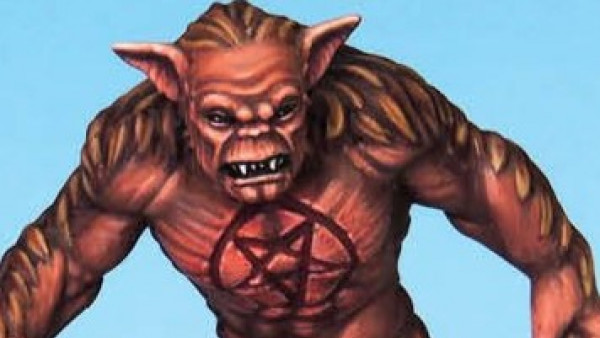
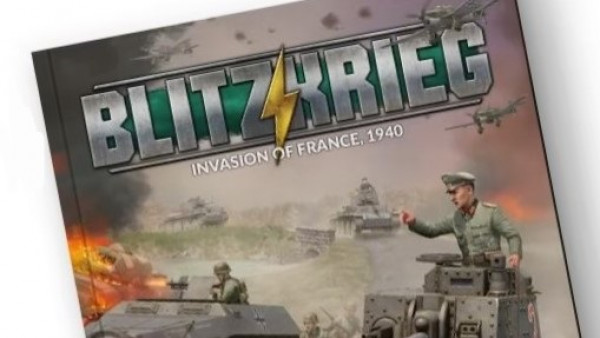
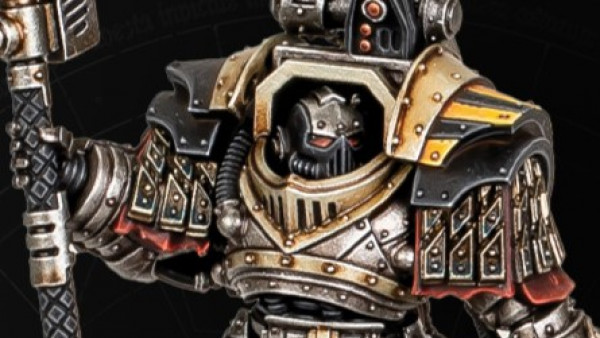
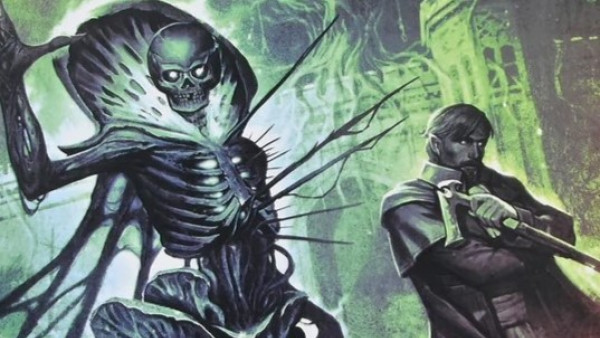
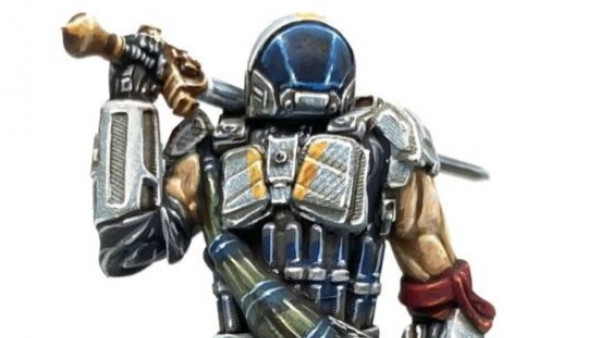

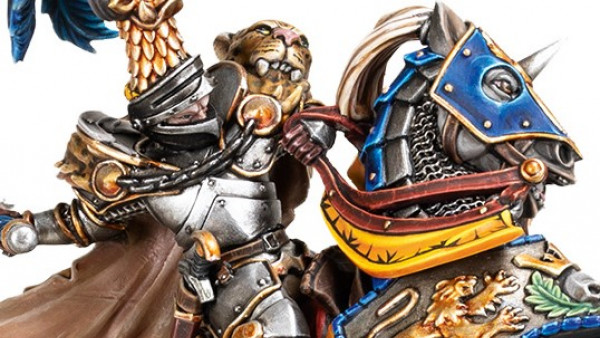

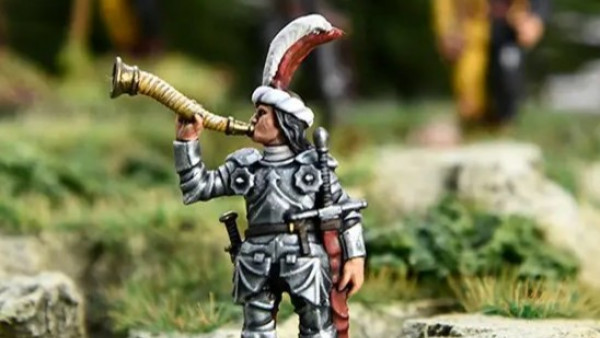

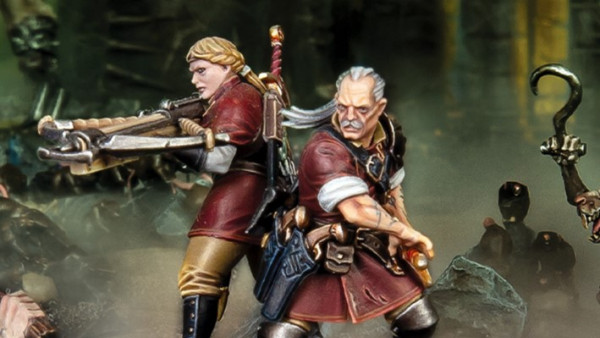
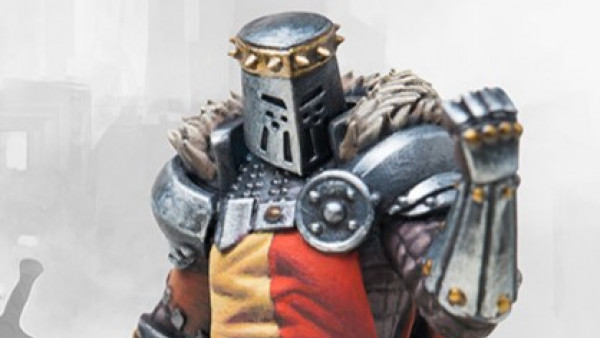


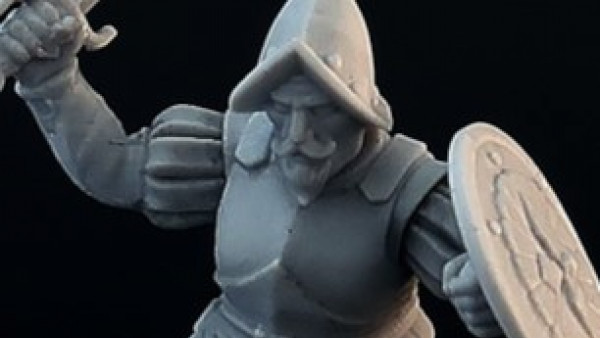

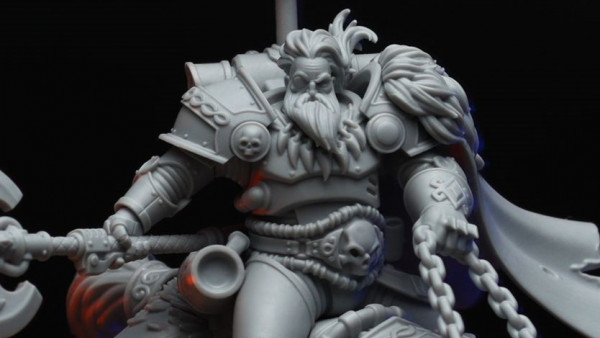

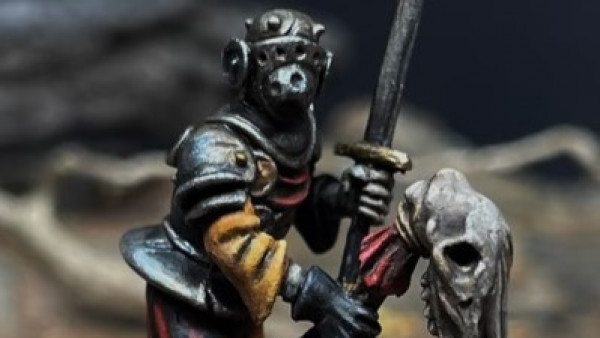

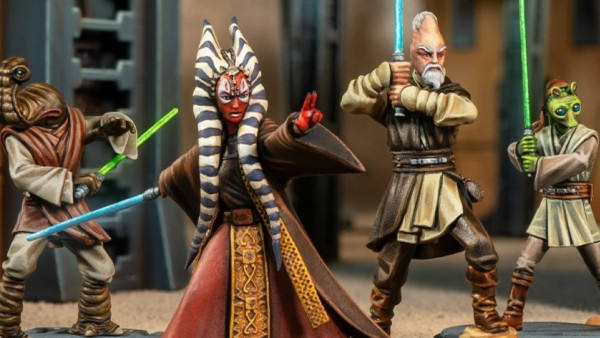
Only complaint – it where too short 😉
Joking aside, well done @oriskany, I did enjoy the series
Thanks, @rasmus . Although in truth I thought some of these articles were too long. 🙂 I know what you mean, though, the campaign was decided in only “18 days” (loosely based on the 5-turn option for a WW 2.5 game in the downloadable rules, there are options for a 10-turn game where the war would last a month or more). I also picked an “Allied victory” model. During playtesting for WW 2.5, though, the Soviets won plenty of times, once with an armored spearhead in the Ruhr and even a mechanized corps in the Netherlands. One of the big… Read more »
And it is also a favorite quote from an author who did not known how to be short, Tolkien when asked about Lord of the Rings
I’ll have to take a closer look at the rules
He said that? HA!
Great job, sir. Well done. The Centurion came out looking really well. I love the narrative style of writing. I love the campaign maps and look forward to checking out that system. You’ve done a good job writing in just enough BattleGroup rules to entice with over doing it.
Just kicka$$ all around. And as far as “convincing”…
You got those Chaffees, then the Pershings and the ISIII’s and I said, “A WW2.5 sounds like providence to me.”
Excellent, thank you so much.
Thanks, @amphibiousmonster . 🙂 Yeah, I didn’t want to lay on the Battlegroup rules too thick, because (a) I needed the room for narrative, and (b) @piers is far better expert at the system than I am. The last thing I wanted was to misrepresent the BG system with a rules error.
I agree about the Chaffees, Pershings, and Stalin-3s. What’s not to like in an armored wargame? 😀
Another amazing writeup to an incredible campaign! Loved the narrative, especially Major Wyte’s heroic defense! Well done!
Thanks, @gremlin and @lblunchboxlb . Yeah, the British really should have won that one. They had not one but two Typhoon airstrikes, and were mauling the Soviets on the ground almost from the outset. From a game design perspective, though, it was a relief to see the side that had more air power actually lose a game. Otherwise the implication would be that pulling that Air Strike counter is all you need to win. Turns out that totally wasn’t the case. The Soviets just kept pulling very small counter values when they’d lose units, meaning that despite their losses, their… Read more »
Amazing series. You should be proud of yourself. I actually like this a lot more than a lot of the “weird world war” settings (Allthough they are cool in their own way), this appeals more due to the realism I think for me. Curious what you’ll do next 😉
A really engaging series. I have been waiting eagerly each Monday for the next instalment. I also want to say thank you for producing a rules pack so we can play this scenario out as well.
Thanks, @abstractalien and @teabaron . I hope you like the rules, if anyone has any questions we can start a FAQ thread in the History Town Square. As far as what we’ll do next, I really can’t speculate at the moment. Definitely something after a couple of months. Thanks once again for all the kind words! 😀
I LOVE the narrative flow. Though as a frequent play tester as the Russians, I’m disappointed at the outcome 🙁 I mean when you have screaming katushkas on your side and is 3’s, you really are at an advantage. Also, The boards look amazing! I don’t know how u could possibly top them for your next article. Another great one for the history books!
well done!
Thanks, @radegast and @gladesrunner . But come on, gladresrunner, you beat me at least once with both the Allies and the Soviets. As far as the American victory on the BG table, I figured they were due for a victory after the pounding they took in the Fulda Gap in Part One. As far as my boards getting any better, just look at some of the boards they’re putting up for Bolt Action.
I want this novel, and as a movie too 🙂
Another great report dude…
Thanks, @piers . I just hope I did BG some justice. 🙂
And @noxley2525 – I’ll write the novel. I’ll even get the literary agent (I’ve had plenty of them before). Someone has to find me a PUBLISHER! 😀
Lucky me I still have them all to read through properly I’ve not been able to devote much time to anything other than work recently.
a great end to the run, @oriskany i take it that the PIAT was an upgraded one not the haphazard original version, love the IS-3 tanks they would make a good future / alien tank for different battles.
Thanks, @huscarle . When you read all the articles I hope you like them. I have to admit, @zorg , I don’t know too much about the PIAT. I just had British infantry and wanted to give them some antitank capability. I’ve read that the PIAT was just as effective as the Panzerschrek and Bazooka, in fact had some advantages (you could fire it in an enclosed area, for example, like an attic or a window). It was just tough to load and heavy as hell. The bazooka was lighter and a lot simpler to load in combat, but couldn’t… Read more »
i don’t know much about them just a program about Arnem a surviver was saying that the PIAT was not as good as other anti-tank weapons very short range and tended to bounce of targets.
That’s probably true. And the Bazooka had a light, sometimes ineffective warhead. The Panzerfaust was much more powerful but could only be fired once, and range was VERY short. WW2 antitank weapons were still very new. They were a long way off from the Javelins, TOWs, Dragons, and other missiles systems of today. 🙂
can’t beat a sticky bomb just don’t run out of socks?
Ah yes, @zorg – Saving Private Ryan – changing Close Assault rules vs. AFVs since 1997. Infantry get a +1 bonus, but then suffer -1 movement for the rest of the game since they have no socks! 😀
Plus -1 to moral with the boots rubbing.
Brilliant job, @oriskany! 🙂
Thanks, @deltagamegirl22 ! 🙂
Ok… @oriskany what can I say? That this series was a blast? Words do not and will not reflect what you have done here. The battle reports with all these small narrative goodies are awesome. I am really sad the war has ended here. 🙂 I am just thrilled. I did read the World War 2,5 Rulebook. It is really well written. Now I need to get Battlegroup 🙂 Congratulations man.
So glad you liked the article series and WW 2.5 rule book, @yavasa . To play Battlegroup, you need the core rule book (like $16 USD if memory serves) and at least one of the supplement books (more expensive, but larger, hard-cover, and lavishly illustrated). I have “Fall of the Reich” (I wanted late war to support this project), which is just gorgeous. If the others are anything like FotR, the whole series is awesome.
But don’t you have some Bolt Action minis to paint? (wink) 😀
Thanks as always for the support and the kind words.
Very well done mate, give yourself a pat on the back, and thank you for putting WW2.5 together. I really enjoyed the cold war aspect using 1946″ish” tanks etc. The range of vehicles used gave it a really interesting twist, but I bet it would have been a logistics nightmare. Agree with the P-47 over the P-51, I think they thought that in Korea too, when the F-51 was mainly put to a ground attack role, but they did have the F-4U Corsair as well. For me I liked that the BAOR in the majority of its tanks where armed… Read more »
@y51c – thanks, I really appreciate it. Yeah, I wish I had a P-47 to use there. Of course, on the table you can just “proxy” the figure and use P-47 information, but that doesn’t work for the photo. The British guns as portrayed in Battlegroup are very powerful, particularly the 17-pounder. In fact, in all my experience of Battlegroup (which admittedly is only about two months), that’s probably the one tiny, 1%, nit-picky issue . . . how powerful certain British guns are – specifically the 77mm L50 and and 17-pounder. According to other games I have and reading… Read more »
I learned the first Kangaroos were “field developed” and employed, by the Canadians of course, in the siege of Dunkirk. September-ish of ’44. I don’t really know how well they took off in popularity after that. I imagine they were very popular, but you needed an M4 chassis from a tank or SPA to make one. As far the soviets go, one tidbit I could add. Early in the war they were hurting like #$%^&* for trains too. Russian train tracks are a different gauge than western ones, I guess. But somehow that was still a big part of lend… Read more »
That’s true about the locomotives. Strategic mobility is as important as (if not more important than) as tactical / operational mobility (moving around on tank tracks and wheels).
P-47/Typhoon/Tempest underated aircraft in my view. I am really liking the sound of BG even more now, it gives good stuff to the British Army, yippee;). Good point on the transport and train system problems the soviets would have faced. Must admit I do not know enough about the guns ballistics to debate, have read some where that the accuracy of the 17 pdr was a problem at some point, and had been ironed out later on. In some aspects the Easy 8 was a generational upgrade of the M4, with better suspension and wet ammo racks, etc. Where I… Read more »
Also do think there would have been a lot M4 chassis left lying around after the war for them to be made in to Kangeroos, from the M4 75mm gunned versions ;).
that true some of the US logging company’s still use yarders made from m4’s
@y51c – from what I’ve read, the 17 pounder hit harder, but wasn’t as accurate. Another source said the early APDS “sabot” rounds suffered from a “degree of dispersion.” I’m not 10% sure what this means, so stringing a few theories together: a) The British developed the first “sabot” type tank ammunition, which is general in use to this day. b) These sabot rounds were first used in 1944-45. c) A big issue with their stability comes right when they leave the muzzle, and the sabot “shoes” (what “sabot” means, after all) detach from the penetrator dart that remains zipping… Read more »
i am sure their is 1 or 2 M4 yarders in the axman show @oriskany
I haven’t gotten around to buying any Kangaroos yet . . . but if any of my Sherman turrets is ever damaged beyond reasonable repair . . . I sense a conversion coming on! Bwahaha! 😀
and your troops will have an equipped job for after the war.
“Can I take home th’ tank, sar’nt? Come on, now! I kin finally tow all the junked cars outta me cousin’s yard wit’ it!” [Spit tobacco juice . . . ]
A big congrats on this ruleset! I’ll certainly try to give this a go!
Thanks again @oriskany for the last chapter in this great campaign. I have sat down this evening and read through all 4 parts in order and I have been blown away by it mate. I’m glad like you that it wasn’t a one sided campaign and even a the point of this ending the bigger picture could well change. I’ve downloaded the rules set and I will give it a good read over the next couple of days. On the Battlegroup rules question, i think you have given a good balance about the rules to the narrative of the game.… Read more »
Thanks, @neves1789 . I hope you like the rules set. There’s a little bit of work cutting the maps and counters, etc. A lot of time can be saved by using pennies or some such for the resource counters (like the rules set suggests). The ones included in the game certainly work, but it’s a hundred less counters to cut. 🙂 Once you’re up and running, we’ve found that the five-turn version of the game usually runs in about three hours. And thanks, @ chaingun . Indeed, this war isn’t even close to over. A lot of operational games, however,… Read more »
Wow! Just got a chance to download the completed game. Kick BLEEP!!!! Very clear and easy to follow. There is enough detail that it feels ‘fleshed out’ and answers any question I could think of, but not so heavy its boring to read. I also enjoyed the touches of humor. Though the best parts are the maps. Once someone takes the time to put them all together it’s going to look great! Any chance a supplemental map might be coming out where NATO gets to go first and the Russians are on defense? You know, the truely ridiculous Patton plan?
Yeah, @gladesrunner , that game actually looks a little different when you’re not gaming off of loose leaf paper and 3×5 note cards, eh? Our playtesting map also had magic-marker mountains, forests, and pasted-on cities in some places. Ah, development. 🙂 The map should print in 12 segments fine. Each page-segment is small enough so that either US 8 1/2 printers or International A4 printers should work fine. Just print the pages at “original” size and it should come out on either size paper (the margins SHOULD be wide enough to allow this in either US letter or A4, but… Read more »
Oh yes. One day I will totally mount those maps to the best of my ability. Short term, i’ll have to drop ’em on Excel.